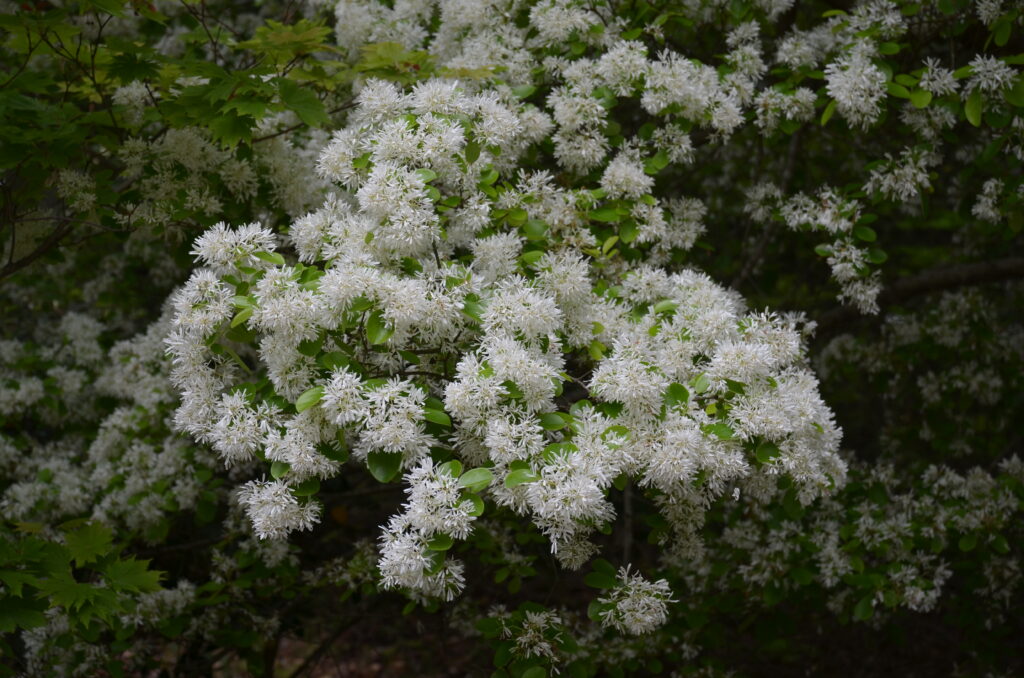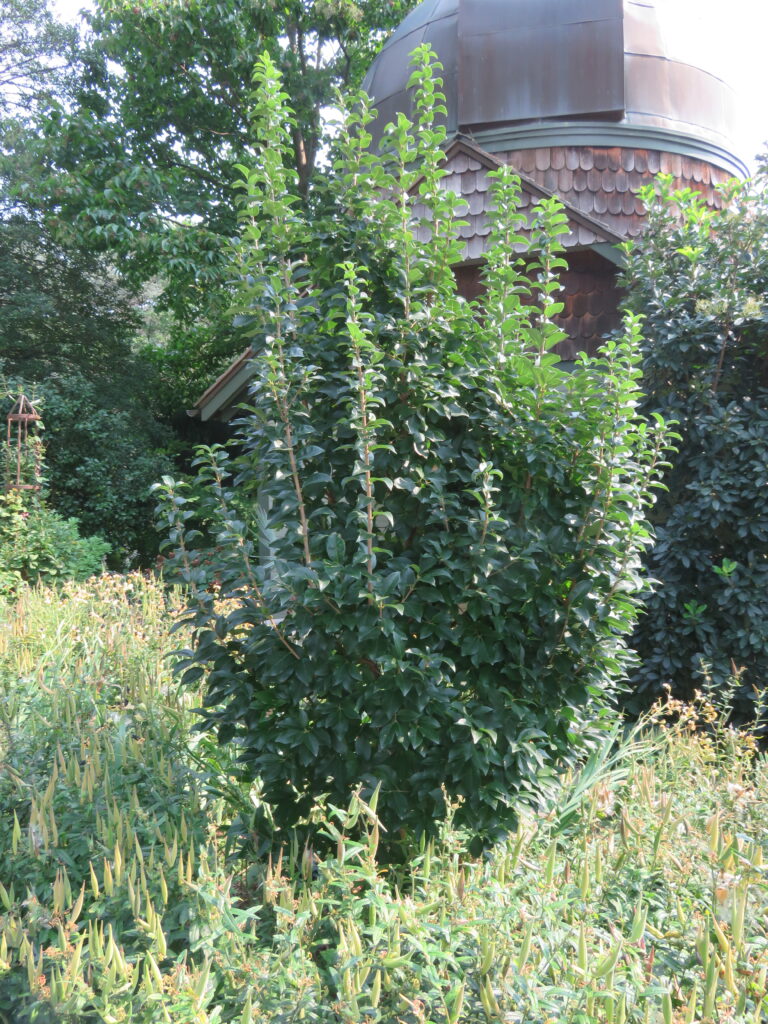Gardeners are waking up to the tough as nails Chinese fringetree (Chionanthus retusus). (USDA hardiness zones 5-9). It has gorgeous foliage, showy snow-white flowers in the spring, and exfoliating bark. Native to Korea, China, and Japan, this low maintenance multi-stemmed large shrub or small deciduous tree is becoming easier to purchase at U.S. garden centers and online nurseries.

Flowers often appear about 1-2 weeks before U.S. native species C. virginicus. This low maintenance beautiful tree likes an average, medium moist, fertile, acidic soils and in full sun to part shade. Best flowering occurs in full sun. It seldom needs pruning. Tolerant of air pollution and adapts well to urban settings, it abhors long summer dry periods.
Chinese fringetree ranges in height from 20 – 30 feet with lovely textured bark which is also exfoliating as the tree ages. If planted in the South, add another 10 feet in height. Set the tree in full sun or partial shade. The lustrous, leathery oval-shaped leaves and wispy fragrant white flowers are its key pluses. Some gardeners report it is a biennial bloomer, blooming heavier in alternate years, one year ON and next year OFF (far fewer flowers).
Both our native and Chinese fringetrees are underplanted. Propagation from seeds and cuttings is slow resulting in higher production costs. Mulch the tree with 2-3 inches of mulch and replenishing it every year to improve soil quality. Spread 9-10- month slow-release formulated fertilizer in the fall/early winter.
Fringetrees are primarily dioecious (separate male and female flowers). Flowers are slightly more showy on male trees. Female trees flowers, if pollinated and fertilized, will produce clusters of olive-like fruits (each to ½ inches long) which ripen to a dark bluish black in late summer/fall and are a good food source for birds and wildlife. Fall leaf color is an average yellow. When a young tree, bark is light brown exfoliating and strikingly furrowed as it ages.

No serious insect or disease problems. Some susceptibility to mites, scale and borers. Watch for leaf spots, canker and powdery mildew. Plants sold in commerce are not labelled “male” or “female”. Fringetrees may be damage by fruit feeding deer.
Cultivars / Varieties:
China Snow – multi-stemmed, slightly smaller version @20-25 feet tall and wide and an excellent alternative in urban settings
Tokyo Tower – 12 to 15 feet tall and 4 to 6 feet wide with a narrow upright branching “stovepipe” appearance as well as a tan and gold exfoliating bark; good candidate as an urban street tree.

 Posted in
Posted in 
